The lens with a super wide angle is designed
for interchangeable-lens X-Pro1 Fuji camera. It features a field equivalent to
a 21mm lens on a 35mm camera, a maximum aperture of f/2.8 and costs about
$1,155.
Features and handling
This lens’s design uses a lot of metal and
high quality plastics, which makes the products very light-weighted, but it
still owns a solid and sturdy build. With the weight of 230g, this lens is
rather light for an optical wide-angle lens.
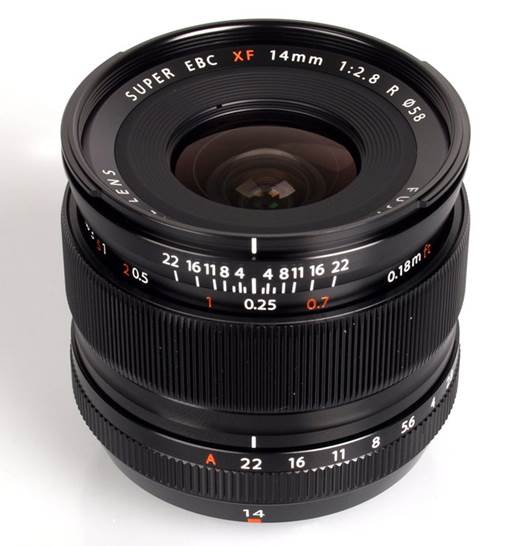
The
Fujifilm Fujinon XF
The 58m filter thread does not rotate or
extend as the focusing process is conducted internally, which makes it very
ideal to use with polarizing and graduated filters. A petal-shape hood plays
the role of a shield to prevent the lens from exposing to extraneous light that
might cause light, as it is attached to the bayonet around the front of the
lens. The focusing ring is also easy to use as it is well damped. To have the
distance scale and the hyper focal displayed on the lens, you just need to
slide the focus ring back towards the camera. The autofocus performs quickly and
very accurately thanks to the latest update for the X-Pro1. An SD card
containing the latest camera firmware is packed together with the lens in the
box.
Just like other XF lens, this 14mm lens’s
case has a manual aperture ring. This aperture ring has been marked at each
full stop, but there are still click stops for each stop setting. The ring also
has an “A” setting for the automatic operation. Just with a light touch to the
aperture ring, you are applying the adjustment for the setting selected.
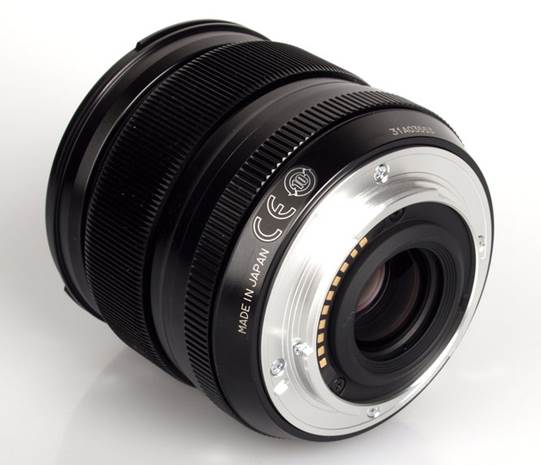
The
front of the lens
Performance
The sharpness in the center of the frame
reaches the excellent level when the aperture is at its maximum level and the
clarity towards the edges approaches very good levels.
Stopping down to f/5.6 still leads to very
good clarity in the center part of the frame and wonderful sharpness towards
the edges of the frame.
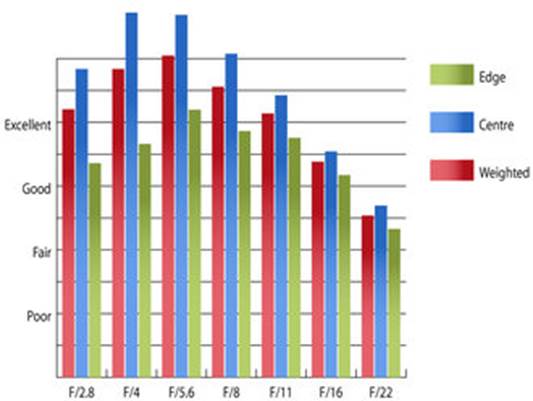
Chromatic
aberration testing
How
to read our chart?
Figures from the center of the frame at
different apertures are represented by the blue columns, and the green ones
indicate the readings from the edges. Take the averages of them we will have
the red weighted columns.
The scale on the left side of the chart
indicates the real image resolution. The higher the column is, the better the
lens performs.
In this review, we tested the lens on a
Fujifilm X-Pro1 using Imatest.
The Chromatic Aberration is excellently
controlled. It barely exceeds half of a pixel width when the lens is stopped
down to more than f/8. It is very hard to spot at this level as it is an
extreme low one, even in images whose frame’s edges are high contrasted.
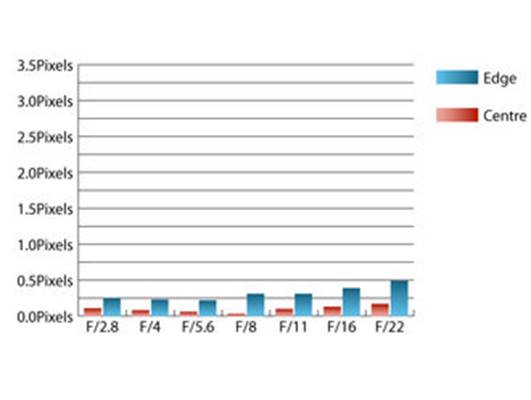
The
sharpness testing
How
to read our chart?
Chromatic aberration indicates the
inability to focus on a sensor or soften all colors of the visible light at the
same point of the lens. The higher the chromatic aberration, the higher
probability that noticeable fringing or halo effect around the sharp edges
within the picture appears. However, it can be fixed by editor software.
The Apochromatic lens has special lens
elements (aspheric, extra-low dispersion, etc.) to minimize those issues, so
undoubtedly, there are usually more costly.
In this review, we tested the lens on a
Fujifilm X-Pro1 camera using Imatest.
For an ultra-wide angle lens with a
moderate maximum aperture, as expected, the falloff of illumination toward the
corners is considerable at f/2.8. Here, 2.36 stops are the difference between
the corners and the center area, and the visually uniform illumination is not
possible to achieve until we stop the lens down to f/8 or more.
Distortion level is really low for such an
ultra-wide angle lens. It is just 0.15% barrel distortion that can be detected
by the Imatest, which is an insignificant amount.
The petal-shape hood is packed together
with the lens as standard, although its ability is not enough to protect the
front of the lens from unrelated light which can cause glare. The reduction of
contrast level can be noted when shooting into the light at wide aperture. Excluding
all of those things, this lens would be very good in resisting flare.
Sample
photos

The
sample photos taken by the product
Value
Currently, there is still no direct
substitute for the Fujifilm compatible camera. It is quite shocked to see the
price of $1,155, but when considering the lens fairly and understanding every
benefit that this lens brings about, you would find the price reasonable.
Verdicts
Other ordinary wide-angle lenses are not
better than this one. One sure thing is that this lens is not cheap at all, but
it is capable of providing more-than-wonderful results with very low distortion
and almost no sign of chromatic aberration remarkable sharpness is recorded.
The build quality and feeling of this lens
are also great and it is undeniable that the hyper-focal scale on the barrel
plays such an important role.
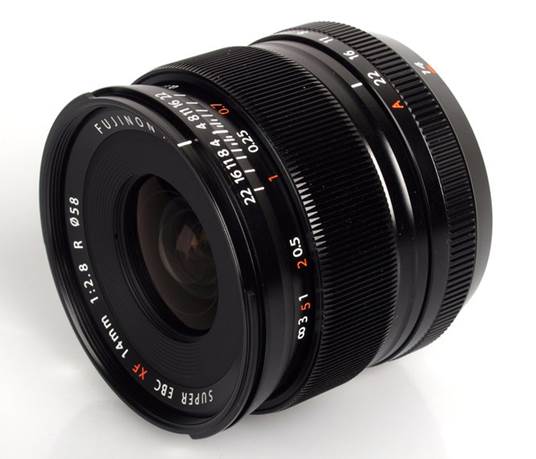
The
product image
Advantages
·
The center area is extremely sharp
·
Wonderful sharpness towards the edges is showed
when stopping the lens down
·
Light weight
·
Useful hyper-focal scale
·
Great build
·
Almost no distortion
·
Low CA level
Disadvantages
·
The falloff of illumination towards the edges
might be quite noticeable
Specifications
|
General
·
Lens Mounts: Fujifilm X Mount
Lens
·
Focal Length: 14mm
·
Max Aperture: f/2.8
·
Min Aperture: f/22
·
Filter Size: 56mm
·
35mm equivalent: 24mm
·
Internal focusing: No
Focusing
·
Min Focus: 18cm
·
Stabilization: Yes
Box Contents
·
Box Contents: Lens, Front Lens Cap, Rear Lens
Cap, Lens Wrapping Cloth, Lens Hood, Owner’s Manual
|